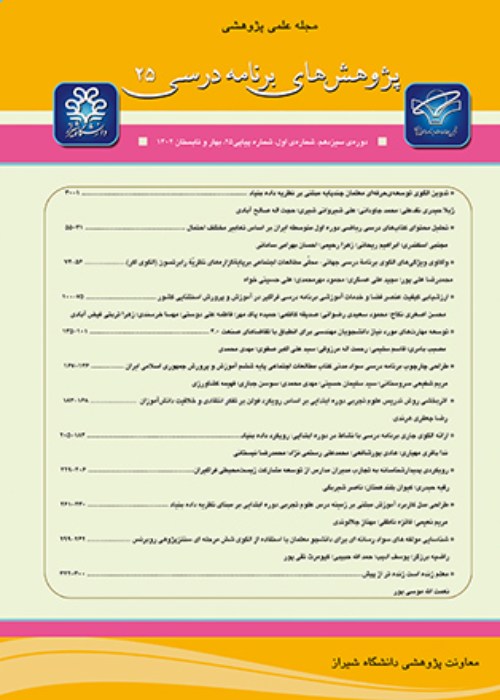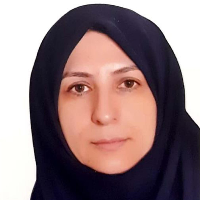A Comparative Analysis of Concepts Presented in Primary School Mathematics Textbooks in Iran and Japan
Different countries participate in various international assessments, including TIMSS, to better track their progress in science and mathematics education. During some periods of this study, Iran performed lower than the global average of the participating countries and some of its Asian peers. Mathematics education specialists have sought to investigate the reasons for this issue by holding numerous meetings and conducting various studies. This difference in the performance of Iranian students compared with their peers in other countries can be explained by multiple factors, including how classrooms are held in different countries, how teachers and their teaching methods are prepared, the changes made to textbooks and the educational system, etc. One of the most important factors that can account for the Iranian underperformance in mathematics is the structure and content of mathematics textbooks. This suggestion is confirmed by the results of various internal and external studies that have referred to the significant effect of mathematics textbooks on learning and students’ achievements. Therefore, considering the decisive role that mathematics textbooks play in creating content and process knowledge, as well as students’ performance in international studies, conducting studies with the aim of comparing textbooks of different countries seems to be necessary to identify the strengths and weaknesses of textbooks belonging to any given country. The results of such studies can be used to introduce changes and thus improve mathematics textbooks. Research Question: 1- What concepts are common between the Japanese and Iranian first-to–sixth-grade mathematics textbooks? 2- What concepts are specific to the Japanese or Iranian first-to-sixth-grade mathematics textbooks?
The present study adopted a qualitative approach using Bereday’s four-step method of comparative analysis to examine and compare the concepts presented in the primary school mathematics textbooks of Iran and Japan. Data collection tools included content analysis forms whose face and content validity had been confirmed by mathematics professors and experienced teachers.
The examination and comparison of the concepts present in the Japanese and Iranian primary school mathematics textbooks showed that primary school mathematics textbooks in both countries included a variety of content including numbers and operations on them, geometry, measurement, etc. in each grade. The concepts were revisited in the subsequent grades at a higher level and in a more complicated manner. Furthermore, the results indicated that there were some topics common between and specific to the Japanese and Iranian primary school mathematics textbooks. Although some concepts were common in primary school mathematics, those concepts were presented to students in different grades. In both countries, students at the primary level were introduced to concepts such as numbers and operations on them, pattern identification, fractions and operations on them, decimal numbers and operations on them, symmetry, measurement, geometry, ratio and proportion, statistics and approximation, and estimation. Regarding the concepts specific to the mathematics textbooks of one country, these concepts were not the educational goal of mathematics textbooks in the other country until the end of the sixth grade. Examples of concepts that were discussed more in the Japanese mathematics textbooks included counting, speed, metric system, and counting and operations with the abacus. On the other hand, some concepts, such as probability, divisibility rules, and negative integers, were only mentioned in Iranian mathematics textbooks. To clarify, While Iranian students become familiar with divisibility rules for numbers 2, 3, 5, and 9 and negative integers during the first-to-sixth grade in primary school, these concepts are not introduced to Japanese students before the end of the sixth grade. On the other hand, the introduction of prime numbers and (common) divisors were specific to Japanese primary school mathematics textbooks.
Examining the concepts that were common between and specific to Iranian and Japanese primary school mathematics textbooks and comparing the performance of Iranian and Japanese fourth-grade students in solving mathematics problems related to those concepts, as published by TIMSS, revealed that Iranian students performed poorly compared to their Japanese peers in common topics. Various factors can account for the poor performance of Iranian students in problems related to common topics, but regarding primary school mathematics textbooks, it can be said that the content of these textbooks needs to be reviewed and modified, and the examples presented in the text of these textbooks can be further improved. Mathematics textbook authors are encouraged to take the necessary steps to improve the content of mathematics textbooks by examining and comparing the presentation of common concepts and the problems associated with them in Japanese and Iranian primary school mathematics textbooks. This, in turn, can help students gain a deeper understanding of mathematical concepts and build on their understanding to foster constructive changes. As regards the concepts specific to Japanese mathematics textbooks, it is not wise to act precipitously and rush to include these concepts in Iranian textbooks. Rather, this issue requires careful inspection of the results related to the performance of Iranian students in mathematics in different periods, as reported by the TIMSS and other international platforms. It is also necessary to conduct more extensive research on the potential effects of introducing non-common concepts presented in Japanese mathematics textbooks into Iranian mathematics textbooks
- حق عضویت دریافتی صرف حمایت از نشریات عضو و نگهداری، تکمیل و توسعه مگیران میشود.
- پرداخت حق اشتراک و دانلود مقالات اجازه بازنشر آن در سایر رسانههای چاپی و دیجیتال را به کاربر نمیدهد.



